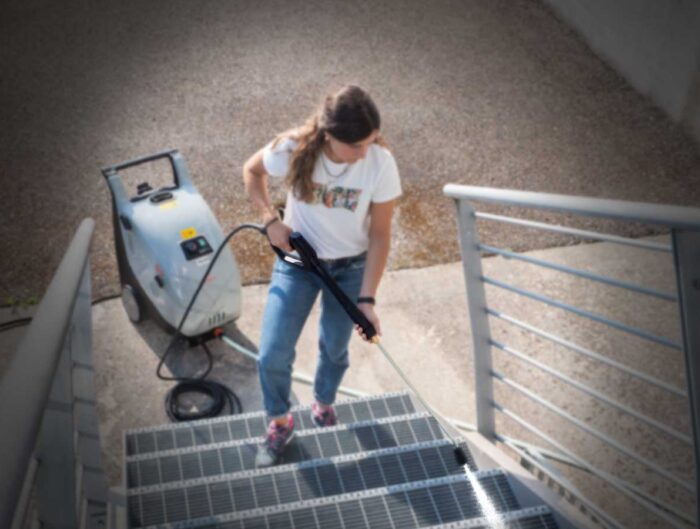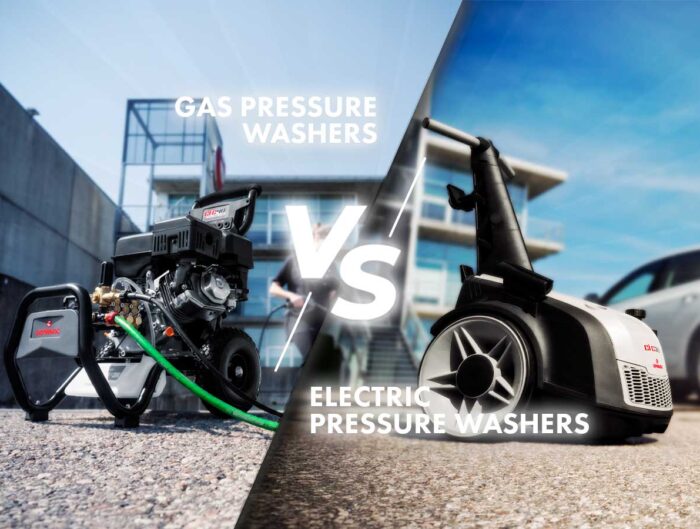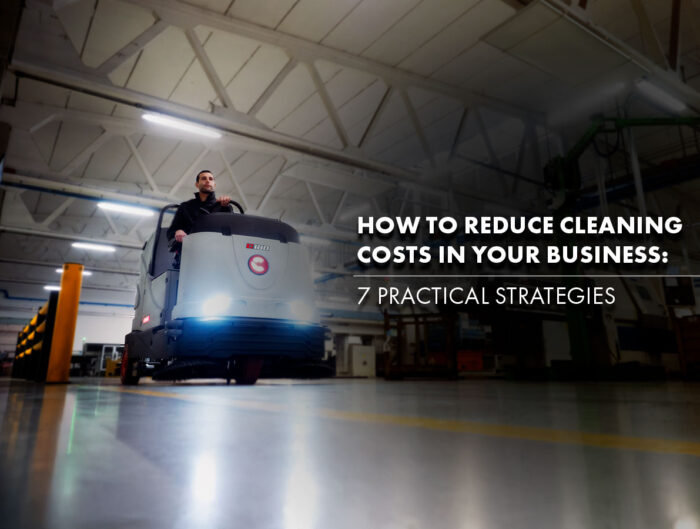Choosing the best wet and dry vacuum cleaner can make a real difference in professional cleaning tasks. The right machine helps you handle liquids, damp dirt, and solid debris quickly and safely while improving both efficiency and results. Unlike standard vacuum cleaners, wet and dry vacuums are specifically engineered to tackle not just dust and dry debris, but also liquid spills and moist dirt. That’s why they’ve become essential tools in professional settings where performance, safety, and convenience are key.
In this wet and dry vacuum cleaner buying guide, we’ll take a closer look at the Comac range, designed to offer top-level performance, long-lasting reliability, and excellent results in the most demanding environments.
What are wet and dry vacuum cleaners used for?
Wet and dry vacuum cleaners are specifically designed to remove liquids, damp dirt, and even heavier debris quickly and efficiently from a variety of surfaces and environments. Unlike traditional vacuum cleaners, they come equipped with reinforced tanks, specialized filters, and waterproof components, making them ideal for safely handling fluids without risking damage to internal parts.
These machines are essential in professional settings where the presence of liquids is frequent and cleanliness is critical. Common applications include mechanical workshops, food processing plants, swimming pools, car washes, beauty salons, and healthcare environments. In all these contexts, a professional wet and dry vacuum cleaner offers a reliable and effective solution for maintaining clean, safe, and hygienic spaces.

What’s the difference between a dry vacuum and a wet and dry vacuum cleaner?
Dry vacuum cleaners — commonly referred to as standard vacuums — are specifically designed to collect fine dust and dry debris. For this reason, they are widely used in environments such as laboratories, production lines, retail spaces, construction sites, and workshops, where cleaning up dry particles is the main requirement.
Wet and dry vacuum cleaners, however, are engineered to handle much more than that. Thanks to a specialized suction system and a sealed collection tank, they can safely pick up liquids like water, oils, and wet debris without the risk of damaging internal components, something a dry vacuum is not built to withstand. This makes wet and dry vacuums the ideal choice in professional settings where liquids are frequently present, whether as part of daily operations or during cleaning procedures. Their versatility and durability make them essential for maintaining safety and hygiene in demanding environments.
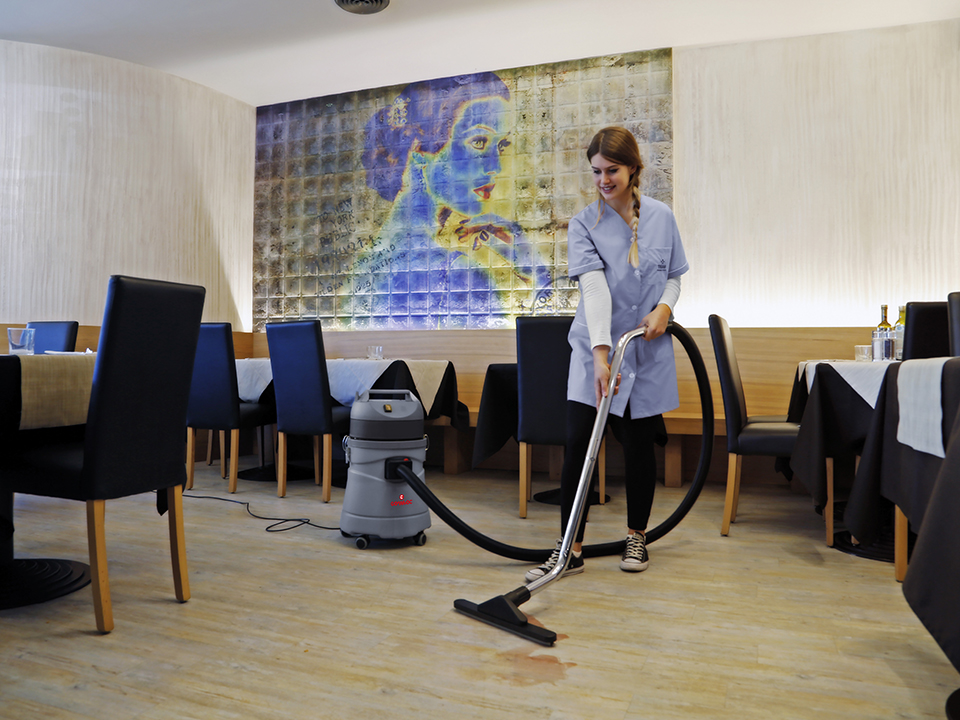
Why you should never use a household vacuum cleaner on wet materials
Using a household vacuum cleaner on wet surfaces is strongly discouraged because moisture can penetrate the electrical components and filters of devices not designed for liquids. This often leads to short circuits, corrosion, and irreversible damage. The same risk applies to professional dry vacuums, which are built only for dry debris. To ensure safety and effectiveness, it’s crucial to use professional wet and dry vacuum cleaners specifically engineered to handle liquids, like Comac’s powerful Wet & Dry range, available with one, two, or three motors. These machines protect internal components while delivering reliable performance in any wet cleaning scenario.
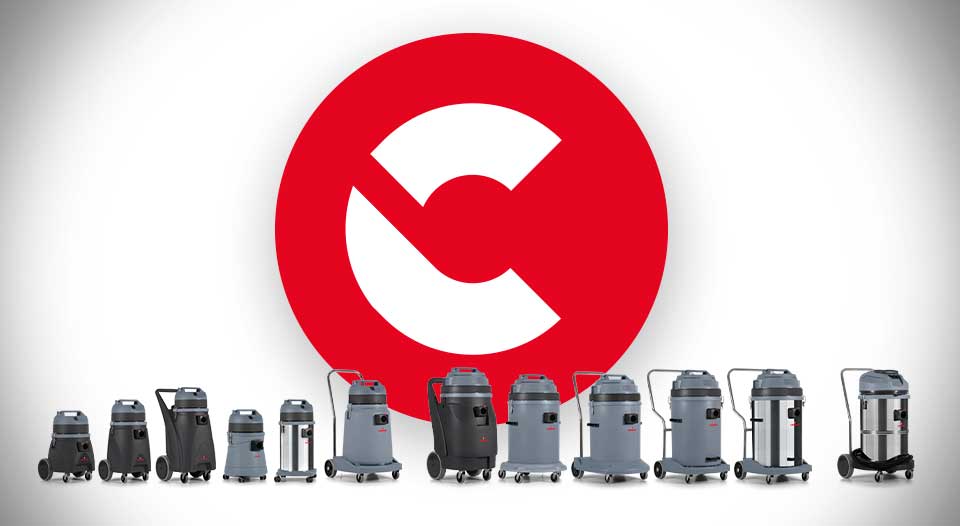
How to choose the best wet and dry vacuum cleaner
If you’re considering purchasing a wet and dry vacuum cleaner, keep in mind that the market offers a wide variety of models with different features and capacities. The key to finding the right one lies in carefully assessing your specific needs.
This is especially true in industrial, commercial, or workshop settings, where efficiency and hygiene are essential. In these environments, investing in a high-quality wet and dry vacuum cleaner can make a real difference.
In this professional wet and dry vacuum cleaners buying guide, we’ve outlined the most important factors to consider before making your decision:
- Tank capacity: if you need to collect large volumes of water, oil, or dirty liquids, choose a vacuum with a large-capacity tank to minimize downtime for emptying.
- Suction power: A powerful motor ensures fast and effective removal of both liquids and solid debris. Higher suction performance translates to shorter cleaning times and better results.
- Filtration system: choose a vacuum equipped with a high-quality filtration system capable of handling wet and dry waste. Comac offers multiple filter options—including HEPA, washable polyester, nylon, sponge, or cloth—so you can match the filtration system to your specific application.
- Ergonomics and maneuverability: for maximum ease of use, select a model with ergonomic handles, large wheels, and a balanced weight distribution. These features make the machine easier to maneuver, even in tight or complex spaces.
- Durable materials: build quality matters. Look for machines with tanks made from impact-resistant polyethylene or stainless steel, and check that seals and gaskets are designed for long-lasting performance under heavy use.
By evaluating these elements carefully—and following the tips in our professional wet and dry vacuum cleaner buying guide—you’ll be able to select the most suitable model and turn even the most demanding cleaning tasks into quick, safe, and efficient operations.

Why choose a wet and dry vacuum cleaner: key advantages
A professional wet and dry vacuum cleaner is the perfect solution when you need a single machine capable of handling dust, solid debris, liquid spills, detergents, and even oily substances. Its versatility and power make it an indispensable tool in various professional settings—especially in two key scenarios:
- Workshops, garages, and vehicle maintenance areas. In environments where cars, motorcycles, or bicycles are serviced, it’s common to encounter floors contaminated with oil, grease, or technical fluids. A wet and dry vacuum cleaner allows you to quickly remove all types of residue, keeping the workspace clean, safe, and fully operational, without disrupting your workflow.
- Pools, fountains, and decorative water features. Cleaning pools, fountains or ornamental basins requires specific equipment to achieve fast, hygienic results. After draining, a professional wet and dry vacuum with a nylon mesh filter can easily pick up sediment, leaves, and debris from the bottom. Compared to manual cleaning, it dramatically reduces maintenance time and improves sanitation. For even better results, pair it with a pressure washer to achieve a deeper, more thorough clean.
Thanks to its compact design, user-friendly features, and versatility, a wet and dry vacuum cleaner is also a valuable ally in emergency situations, such as quickly drying floors after minor flooding. In short, it’s an essential tool for anyone who prioritizes efficiency, cleanliness, and professional-level performance.
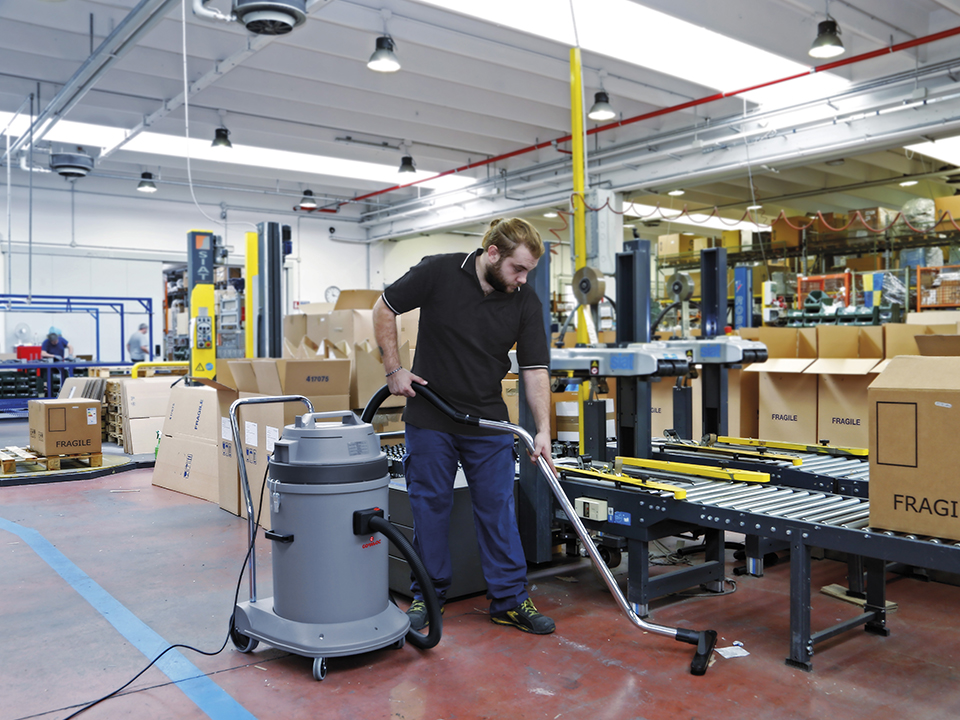
Best Comac wet and dry vacuum cleaners
As we’ve explored, finding the best wet and dry vacuum cleaner requires a thorough evaluation of key factors such as performance, durability, and adaptability to specific cleaning needs. Comac’s professional range is engineered to meet these demands, offering high-powered, reliable, and easy-to-use machines suitable for everything from routine cleaning to the most challenging industrial tasks. Among the various models available, featuring one, two, or even three motors, Comac’s most popular wet and dry vacuum cleaners include the CA80, CA P58.2 WDB, and CA A550.3 WDM S.
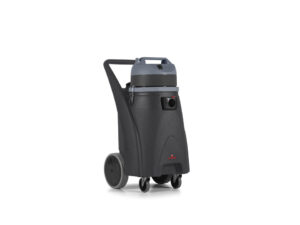
CA80 – Single-motor wet and dry vacuum cleaner
The CA80 is Comac’s single-motor professional wet and dry vacuum cleaner, compact yet powerful, designed for frequent but non-intensive cleaning tasks. Featuring an 80-liter polyethylene tank and a lightweight, maneuverable frame, it’s ideal for environments where mobility is essential, such as swimming pools, beauty centers, small workshops, and garages.
| Capacity of tank (l): | 80 |
| Max. power (W-hp): | 1000 |
| Tank material: | polyethylene |
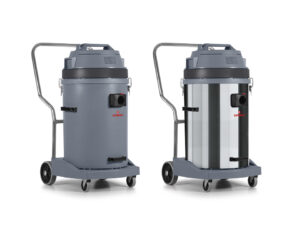
CA P58.2 WDB – Two-motor wet and dry vacuum cleaner
When higher suction power is required, the CA P58.2 WDB is the ideal choice. Equipped with two powerful motors and a durable polyethylene tank, this model is built to handle intensive and continuous cleaning tasks with ease. For even more demanding environments, Comac also offers the CA A58.2 WDB variant, featuring a stainless steel tank that provides added resistance to oily residues or chemical waste, ensuring enhanced durability and long-term performance.
| Capacity of tank (l): | 77 |
| Max. power (W-hp): | 2000 |
| Tank material: | polyethylene or stainless steel |
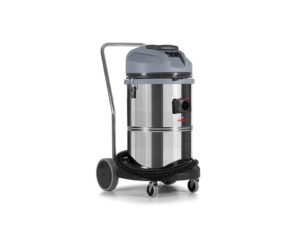
CA A550.3 WDM S – Three-motor wet and dry vacuum cleaner
At the top of Comac’s range, the CA A550.3 WDM S is designed for the most demanding applications. With three high-performance motors and a robust stainless steel tank, it delivers maximum suction power and exceptional durability. This model is ideal for industrial environments, large workshops, and any setting where productivity must never be interrupted.
| Capacity of tank (l): | 65 |
| Max. power (W-hp): | 3000 |
| Tank material: | stainless steel |
How does a wet and dry vacuum cleaner work?
As we’ve seen, a professional wet and dry vacuum cleaner is specifically designed to handle liquids and wet debris. Unlike traditional dry vacuums, it features components engineered to withstand direct contact with water, oils, and moist waste.
At the heart of the system is a suction motor, which creates the vacuum needed to collect both solids and liquids. The debris is directed into the collection tank, typically made of high-density polyethylene or stainless steel to ensure durability and chemical resistance.
Filters play a key role in trapping solid debris and protecting the motor from splashes and residue, ensuring safe operation even in the presence of liquids. Depending on the model, filters may be made of foam, nylon, fabric, or washable polyester. Some units are also equipped with HEPA filters to capture even the finest particles. The vacuum is completed with flexible hoses, nozzles, and accessories like a front squeegee, which makes drying floors faster and easier.
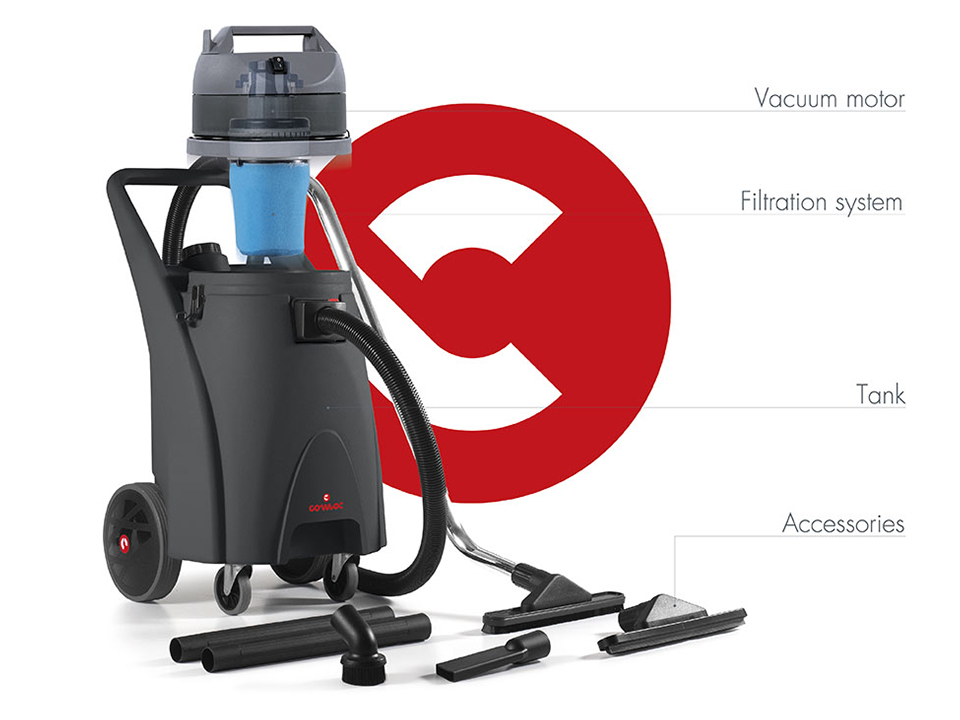
How to tell if a vacuum cleaner can also handle liquids
To distinguish between a standard vacuum cleaner and a wet and dry vacuum, it’s important to understand the technical differences between the two. Traditional vacuum cleaners are designed to collect dry dust and debris, while wet and dry vacuums — often referred to as Wet&Dry — are built with waterproof components, specialized filters, and durable tanks, making them suitable for picking up liquids, damp materials, and oily substances.
A quick way to identify whether a vacuum cleaner is also designed for wet use is to check for certain features, such as squeegee attachments, liquid-resistant hoses, and drain systems that make emptying the tank faster and easier.
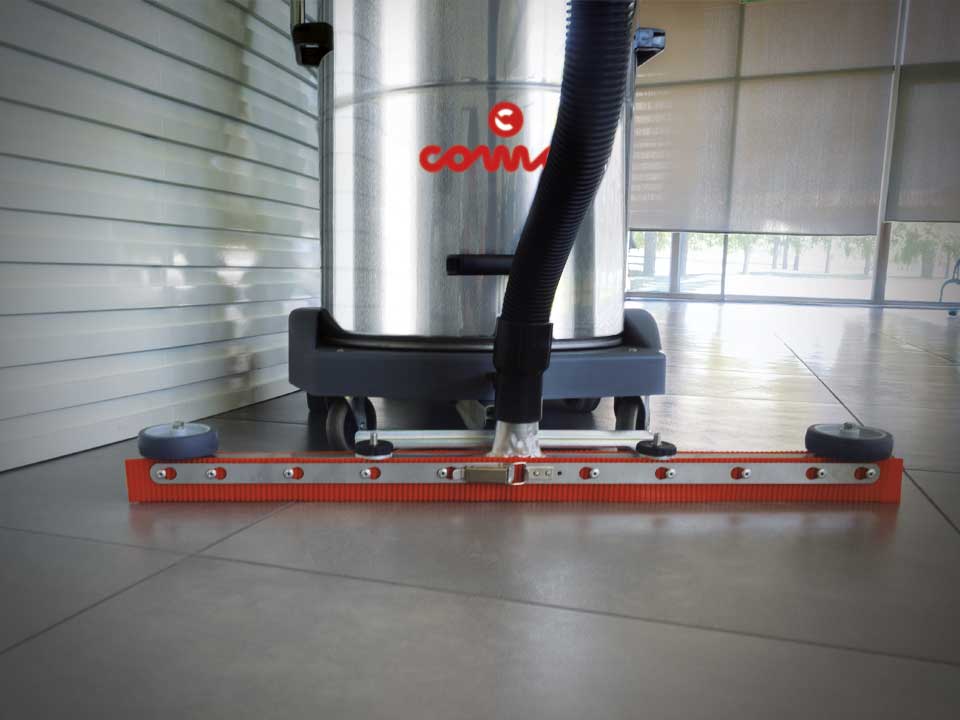
If you’re exploring your options or simply want to understand the difference between dry vacuums and wet & dry models, this article covers all the essential features to look for in a professional vacuum cleaner.
And if you’d like expert advice to help you choose the best wet and dry vacuum cleaner for your needs, don’t hesitate to get in touch. Comac’s network of authorized dealers is at your service to help you find the perfect match for your cleaning tasks.
This post is also available in: Italian


